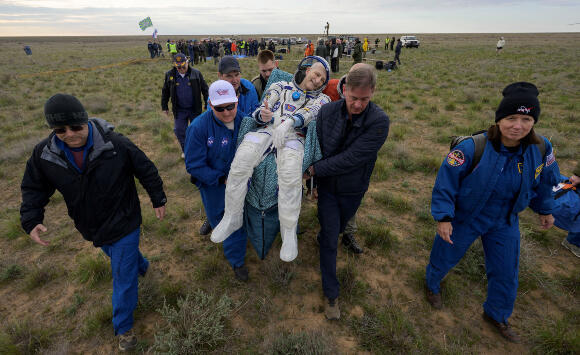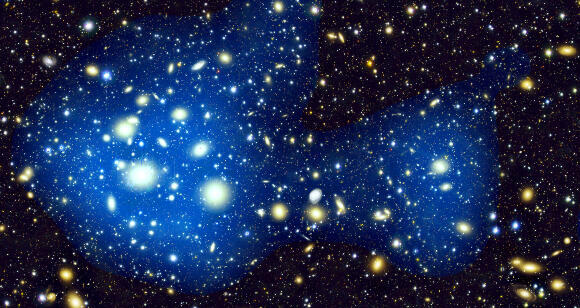Getting your Trinity Audio player ready...
Crew rotations are underway at China’s Tiangong space station. The three crew members of the Shenzhou 20 mission were launched last Thursday for a six-month stay in orbit, docking with the station hours after the launch. This is the third spaceflight for mission commander Chen Dong, and the first for his two crewmates, Wang Jie and Chen Zhongrui. The current crew aboard the station, from the Shenzhou 19 mission, is expected to return to Earth in the middle of this week.
Meanwhile, China announced that the first foreign national to enter its space station will be an astronaut from Pakistan, although the individual has not yet been selected. The mission could take place as early as the end of next year. China has been steadily expanding its international cooperation in space: its recent Chang’e 6 lunar mission, which successfully returned the first-ever samples from the Moon’s far side, included scientific instruments from Italy, France, and Sweden—and also deployed a small Pakistani satellite into lunar orbit.
3 View gallery


Don Pettit being carried from the Soyuz capsule to the recovery helicopter
(Photo: Bill Ingalls / NASA)
According to Amjad Ali, deputy director general of SUPARCO, Pakistan’s national space agency, Pakistan will submit a list of five to ten astronaut candidates to China next month. China will then select two candidates, who will undergo six months to a year of training. One could be launched to the Tiangong station as early as October 2026, with the second serving as a backup. The selected Pakistani astronaut will take part in daily operations aboard the station and will also carry out experiments on behalf of research institutions from Pakistan.
Tiangong is China’s third space station and has been operational since 2021. Until now, all crew members aboard it—and aboard previous Chinese stations—have been Chinese. However, Beijing is now aiming to use space exploration as a means of strengthening international ties, much like the Soviet Union did in the 1980s when it hosted astronauts from other, mainly communist, nations aboard its Mir space station.
Missing the Target
The German space company ATMOS has completed the first test mission of its spacecraft, but due to unexpected changes in the flight path, almost no data was received from the experiment. The startup is developing small spacecraft equipped with inflatable heat shields, designed not for human spaceflight but to carry experiments into space. The goal is to safely return the experiments to Earth so researchers can analyze the results. Currently, such return missions are almost exclusively handled by major companies like SpaceX, which ferry cargo (and astronauts) back from the International Space Station.
ATMOS’s spacecraft, Phoenix 1, was launched last Monday as part of a SpaceX rideshare mission. The primary payload for the launch was a South Korean military satellite, while secondary payloads included Phoenix 1 and another satellite, the seventh from the American-Israeli weather forecasting company Tomorrow.io. Phoenix was originally supposed to re-enter Earth’s atmosphere over Africa, pass over the eastern part of the continent and Mauritius, and splash down in the Indian Ocean, not far from the French island of Réunion.
As part of its preparations, ATMOS set up ground stations along the expected reentry path to collect data from the spacecraft and its heat shield and to analyze the results. However, five weeks before launch, SpaceX informed ATMOS that the flight path would be altered due to requirements from the South Korean military, the owner of the primary payload and the main financial backer of the launch.
The new trajectory took the spacecraft over the southwestern United States, Colombia, and Brazil, ending with a splashdown in the Pacific Ocean, about 2,000 kilometers off the Brazilian coast. ATMOS scrambled to adapt to the new path, setting up alternative ground stations and even leasing an aircraft equipped with communications gear to attempt data collection during the final stage over the ocean. Ultimately, however, Phoenix 1 re-entered the atmosphere off-course and appears to have splashed down approximately 500 kilometers farther than planned.
Still, the company didn’t come away empty-handed. It recovered data from four scientific instruments onboard and confirmed that the heat shield had successfully deployed. However, the rest of the data was lost along with the spacecraft, which likely sank somewhere in the depths of the Atlantic Ocean. Despite the challenges, the company views the test as a success. “All in all, I would say it was a very successful mission,” said ATMOS Space Cargo CEO Sebastian Klaus.
3 View gallery


A spacecraft with an inflatable heat shield. Rendering of the Phoenix 1 spacecraft with its inflated heat shield
(Source: ATMOS Space Cargo)
Dark Matter Bridge
The Perseus galaxy cluster is one of the most massive objects known to astronomers. Such clusters are groups of galaxies held together by gravity. In the case of Perseus, the cluster lies about 240 million light-years away, and researchers estimate its mass to be around 600 trillion times that of our Sun. To put that in perspective: if the Sun were the size of a coin, the Perseus Cluster would weigh as much as 30 million battle tanks. Galaxy clusters grow to such unimaginable sizes by absorbing other galaxies, but astronomers had long believed that Perseus had already consumed enough and was now "resting"—in a stable, relatively quiet state. Now, however, new findings are challenging that assumption—and offering new clues about the elusive nature of dark matter.
Get the Ynetnews app on your smartphone: Google Play: https://bit.ly/4eJ37pE | Apple App Store: https://bit.ly/3ZL7iNv
In recent years, several clues have suggested that the cluster may be more active than previously thought. An uneven distribution of mass, a matching irregular distribution of plasma, and large "cold" regions observed in X-ray radiation all hint that the cluster may have recently absorbed another massive object. Yet one big question remained: if a collision did occur, where are the expected remnants?
To find out, a team of astrophysicists from South Korea and the United States used advanced observational technologies and gravitational lensing—a phenomenon where massive objects bend and magnify the light from distant sources, allowing astronomers to study them in greater detail. This time, researchers used gravitational lensing not just to observe background objects but to map the mass of Perseus itself and its surroundings.
Using measurements taken by the Japanese Subaru Telescope in Hawaii, they detected a large mass of dark matter—about 200 trillion times the mass of our Sun—located 1.4 million light-years from Perseus. They also identified a less prominent "bridge" of dark matter connecting the two structures, providing direct evidence of their gravitational link.
Calculations and simulations conducted by the research team, cross-referenced with data from the Euclid space telescope and the XRISM X-ray Imaging and Spectroscopy Mission, suggest that the collision took place quite some time ago, even by cosmic standards—about five billion years ago - but its effects remain clearly visible in the structure of this enormous galaxy cluster.
3 View gallery


Mapping of dark matter (marked as a blue cloud) against the background of galaxies, showing a large concentration to the right of the Perseus Cluster (on the left side of the image) and a bridge of dark matter connecting them
(Photo: HyeongHan et al)
“This is the missing piece we’ve been looking for. All the odd shapes and swirling gas observed in the Perseus cluster now make sense within the context of a major merger," said James Jee from Seoul National University, who led the research. "This breakthrough was made possible by combining deep imaging data from the Subaru Telescope with advanced gravitational lensing techniques we developed —demonstrating the power of lensing to unveil the hidden dynamics of the Universe’s most massive structures.”

